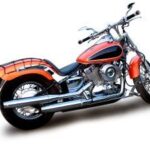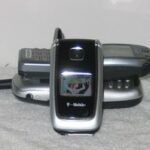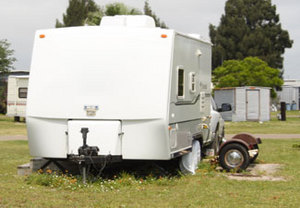In this article I am going to tell you all you need to know to repair non-running motorcycles even if you have little or no mechanical background. There are some secrets that I learned during the 10 or 12 years I did mobile motorcycle repair that you can use to get a corner on the motorcycle repair market. These are secrets that motorcycle shops use and charge customers big prices to have the work done. You will be able to beat these shop charges saving your customers substantial money and give them the convenience of not having to haul their motorcycle downtown to the repair shop. Also most people know that if they do take their motorcycle to the repair shop they are at the mercy of the shop to fix it for what they can afford and the truth is that when you take a motorcycle to a shop you usually wind up having to buy it back. Your customers will really appreciate knowing about how much it will cost them for you to get their bike going again and will love not having to leave the house to get it done. And you will make plenty of cash doing this because people expect a large repair bill and may have already checked out what the shop wants for the fix.
I based my own charges on the going shop rates of several years ago so you may want to find out what shop rates in your area are but at the time in my town shops were charging 50 dollars for the diagnosis and 45 to 65 dollars per hour for labor. They also would make a lot of money on parts because they would replace everything whether it needed to be replaced or not just to sell the parts. You won’t have to do this. I always required my customers to run the parts. But if you do wind up chasing parts for your customer you will want to mark them up as much as double the price because you will be charging your customers an hourly rate based somewhat lower than shop rates. But here is the key. You will want to be very up front with your customers about how much it will cost them to get their motorcycle going and you will need to tell them that you have to actually see the bike. You don’t want to make promises for the cost of repairs on motorcycles you haven’t seen in person and so you charge a “service call” fee. My service call fee was 35 dollars and when my customers would ask me how much it would cost I would simply say that “Its 35 dollars for the diagnosis and 25 dollars per hour for the work.” And I never got a complaint about my rates or had someone refuse to pay and there was tons of money to be had.
I would go from job to job on my motorcycle carrying my tools and diagnostics in a shaving kit bag and that was all I needed. I often made over 300 dollars a day and my pockets were always bulging with cash. This is also tax free money unless you want to report your income to the IRS but I didn’t because there was no way to expand my business. It was a one man show. I couldn’t hire anyone to do what I was doing and the only other thing I could do was to open a shop but I was making more money just being independent. You can too. Along with the secret for charging your customers a service call fee and an hourly rate, which is the only way you are guaranteed to get something just for showing up at your appointment, I will explain a secret the shops use which took me over 5 years to develop that makes troubleshooting an engine problem a snap to fix. This secret is so cool you will be able to ask you customers specific questions on the phone and pretty much know what the problem is even before you show up to do the repair. I will go over some of the questions and things you will need to know so you can select only the gravy jobs and let the time consuming or difficult jobs go to someone else. There will be plenty of work for you out there depending on where you advertise and I will cover advertising and what you will need to know before your customer calls.
The first thing I want to cover is basically all you need to know to do mobile motorcycle repair and the rest of it is just tips and tricks to make it work better and easier but the heart of what you need to know is how no matter what the engine problem is you can find it using Spark, Compression and Fuel. I will describe the diagnostic procedure but every engine must have all three things to run spark, compression and fuel or it will not run. Conversely if an engine does have spark, compression and fuel it will run because there is nothing else to it. So if you find one missing component either spark, low compression or too much or too little fuel you will know why the engine isn’t running. This does not mean that you can’t have a problem with spark and compression or spark and fuel but there is a procedure I will explain that you use and it will save you from doing anything in the way of repair if the engine has mechanical problems or is worn out for example.
The procedure is first to take your spark plug ratchet and socket and remove the spark plugs. You can take a quick look at the plug ends to see black oily (oil past rings or valves), black sooty (fuel mixture too rich) white with melted electrode (fuel too lean or timing too far advanced) or tan (normal). This is just a two second eyeball test. You will want to replace the loose spark plugs back in the caps and turn the engine over either by electric start or use the kicker. You are just looking for each plug to spark. If it sparks that’s the end of that test and only two more to go. If you don’t get spark you will need to continue the diagnosis but if everything else checks out you definitely have a problem with wires, coil, points or ignition or plugs themselves but if you get to this point you will check the easy things first like loose caps, broken ignition wires, voltage to the coil before you go looking at faulty components.
Before you trace the spark problem though you will want to screw in your compression tester and again turn the engine over for each cylinder. The pressure in each cylinder must be at least 90ft-lbs or you have a dead cylinder and this indicates a blown head gasket, burnt or worn out valves or worn out rings or cylinder. You can put a teaspoon of oil in the cylinder if you get low compression and try your test again. If the compression comes up you’ve got worn out cylinders or rings because the oil will seal the cylinder but if its a valve problem the compression won’t change with the added oil. If you do get low compression regardless of the cause I would recommend explaining to your customer that he or she has a shop job that you are not equipped to do and this is true. I have done these rebuilds in customer’s driveways but they never made me much money. For one thing you don’t want to work for your hourly rate too long because for every new customer you are getting your service call fee plus your hourly rate. Also low compression repairs require you to take the head or cylinders in to the shop anyway and you don’t want to do a major overhaul in the guys driveway.
So you just tell your customer right at the point you find low compression just what the causes are and you collect your service call and possibly an hour labor. You won’t spend more than 15 minutes doing this diagnosis but explaining the problem is sharing your expertise and you need to get paid for this. I did sometimes just charge the service call fee out of sympathy for someone if they were looking at hundreds of dollars for top end repair at a shop but only if I could wrap up the appointment and get on to the next. You will have to decide what your time is worth and charge accordingly.
If you do get close to 100 ft-lbs compression and you did get spark then by the process of elimination you have a fuel problem. You can verify this against the eyeball test on the color of plug ends but in most cases the gasoline has turned to gel and gummed up the jets in the carburetor(s). This is an easy repair because all you need to do is remove the carburetor(s) and clean the two brass jets in the bottom bowl. One is the main jet and the other is the pilot jet.
To clean simply use carb cleaner like B-12 Chemtool and a thin brass or copper wire. You can use a piece of stranded electrical wire by cutting a short length of it and removing the insulation and picking out one of the strands. The wire must be very thin for the pilot jet to be cleared. You won’t have to do anything more to the carbs than just clean these two jets and possibly the bowl if its dirty. If you didn’t get spark in your test you will go back and find out why first and that will probably solve the problem but if it doesn’t and you do get good compression you will need to look at the carbs too. And that’s all there is to the diagnosis. 15 minutes is all it takes and you will probably spend the rest of an hour talking to your customer and fixing the spark if its that or explaining the costs which you should check out with the local shops on major repairs if it has low compression. Carb cleaning can take up to a few hours depending on how hard the carbs are to remove but remember you are working from the time you show up and don’t forget your service call fee.
Just to summarize the diagnostic procedure you will use its pull the plugs and note their color, do the compression test and then from your findings determine whether you have a fuel problem or not. Remember,if you do have spark to each plug and you do have close to 100 ft-lbs compression in each cylinder and the engine won’t run you MUST have a fuel problem by the process of elimination. You can count on this.
The tools you will need are very simple. You might even get along without American standard tools because there are very few American or British motorcycles you will get calls on. Most people have Japanese motorcycles or motorcycles that require metric tools and most Harley owners can afford to take their bike to the shop so you won’t get many of these, at least that has been my experience. Your tools don’t need to be the complete set either. You don’t need a full set of metric wrenches or sockets. You will need the only the tools and diagnostic tools to do the kinds of jobs you will be going out on so basically to make it simple you will need a long handled ratchet 3/8″ drive, 12mm and 14mm spark plug sockets and an automotive compression tester you can get for 25 or 30 bucks from Sears. Get the screw in type of compression tester not the rubber tipped one you hold on the cylinder. This is because many Japanese spark plug holes are recessed and the short press on compression testers won’t work. Also you will need 12mm and 14mm adapters to screw in metric spark plug holes and attach you compression tester to.
In addition to the diagnostic tools you will need to think about what you need to do general repairs and also tools specific to doing your carburetor cleaning because you will get a lot of jobs requiring that. For general repairs you will need the basic common tools like Phillips screwdriver, standard screwdriver, 3/8″ drive socket sizes 8mm, 10mm, 12mm, 13mm, 14mm, 15mm, 17mm, 18mm and 19mm. You might also get a 1/4″ drive ratchet and socket set with 6mm, 8mm, 10mm, 11mm and 12mm. And in addition to an impact driver for removing stubborn Phillips screws you could get several sizes of standard and Phillips bits that would fit a socket because these come in very handy. Again you will only be using wrenches in these same sizes. There is no need for a 16mm socket or wrench or a 21mm wrench and except on rare occasions will you ever need any sizes other than the ones I mentioned. But here is a tip. Your customer probably has a set of tools and if there is any tool you don’t have you can always ask your customer to borrow it.
Think about the most common tools you will need for electrical, carburetors and generally what you work on your own motorcycle with. You don’t need the whole toolbox to do mobile repair. You will also specialize in what you do and you will also know before you go to the appointment what tools you will need. You could even make a lot of money just doing the diagnosis because the main thing people want to know is not what the problem is but how much it will cost them to fix and if you know what the repair shop charges for the various jobs like carb cleaning or tune-ups or overhauls you can earn your money just diagnosing engine problems with spark plug tools and a compression tester.
Of course you will be using a cell phone to receive calls from your ads you will place and you will advertise the number so you may want to get another cell phone from your personal one to receive these calls. You should place your ads in the free bargain papers to get local response. Place your ad in the motorcycle category for mobile motorcycle repair. My ad simply said “Cheap Motorcycle Repair I come to you” and I got plenty of business. I advertised in the Pennysaver or the Nickel paper that came out once a week but you will find that people read those papers even after they are weeks old. Also the rates are often cheaper than advertising in the daily paper but you may want to do that too. Keep your ad simple and make sure you make it clear that you do the work on location not at your own shop. This will attract lots of people who would rather have you come out than load up and take their motorcycle in to be repaired. Just make sure your rates are better than repair shop rates and you’ll never hear a complaint.
How you respond to customers who call on your ad asking you for information about what is wrong with their bike is very important because you don’t want to diagnose on the phone and you don’t want to commit to any set fee. It is also important to make it clear that you have a service call fee. I would say service call fee or say its so much for the diagnosis and so much per hour but you don’t want to give away your suspicions about what is wrong and give a set rate for fixing it because then your customer expects that is the problem and it may not be. Customers are not mechanics and are not always reliable in their guesses as to what is wrong. But there are several questions you need to ask which will give you a great idea about what the job is worth and even if you want the job or not. For example if you get a call and the guy says he has an electrical problem I always ask is the wiring stock or is it factory wiring. You do not want to get into a wiring job where the factory wiring has been modified. Another thing you will want to know is how many miles are on the bike. You can expect that if someone is calling about a bike that quit running and it has 25 or 30 thousand miles on it there’s a good chance it has major mechanical problems. You can still do the diagnosis but if the bike has never had a top end rebuild and it has high mileage it is due. Another thing you can ask is what is the bike doing asking your customer to explain the symptoms. A lot of times you will know exactly what the problem is before you even roll on the job but you want to keep this information to yourself. I always tell my customers that I need to do the diagnosis to tell for sure.
Sometimes people will call with no intention of hiring you at all. They just want information for free so they can fix it themselves or know what to ask the shop. This is another reason to keep your information to yourself because often when they see that you can tell them what the problem is if you look at the bike they will hire you. It is good to know something about the different makes and models of motorcycles but you will come to know the bikes you work on and will soon be able to grab the easy jobs and leave the problem models to a more well equipped shop. Some motorcycles are more difficult to perform certain jobs on especially carburetor cleaning and for more late model bikes the electrical and ignition systems tend to be modular circuitry which takes special equipment to diagnose.
Two-stroke bikes offer a special challenge in that cylinders, pistons and rings wear out a lot more frequently than on four strokes but two-stroke top end jobs are something you can do without too much hassle. They will require a parts run and usually you must take the cylinder to the dealer to have it bored out but its fairly easy to do the disassembly and reassembly. One thing you might not want to do on two-strokes or street bikes is to change tires. This is very difficult with a set of tire irons especially if the tire has a tube. I left tire changing to the shop because there wasn’t much money in it.
Another good thing to ask before you go to the job is if your customer has the manual to the bike. There’s no way you can keep a library on all the different makes and models of motorcycles you will run into and if the owner has the manual it could be a handy reference for you to look up procedures and specifications for that model.
You can do this business from any form of transportation carrying your tools with you and you might want to get a scheduler or planner to keep track of your appointment days and times. I just used 3×5 cards though and found them very handy for jotting down notes on what the customer told me on the phone so I wouldn’t forget if it was the next day I did the job. You will also want to get the customers name, address, phone number and appointment time in your planner.
To summarize, basically you will be doing a diagnosis and you can gauge what jobs you will tackle on your own depending on how comfortable you feel working on bikes. Keep in mind though that if a job takes longer than 2 or 3 hours it really isn’t worth it because you only get the service call fee one time. With the service call fee and a one or two hour job you can expect to make at least 65 to 75 dollars at yesterdays rates and now even more. As I said you will have to check the going rates in your local area because this is what your potential customers have probably already checked out. All the diagnosis is basically is pulling the plugs, doing the spark test and doing the compression test. These two tests should tell you all there is to know about why the engine isn’t running. Then it is up to you to do the repair or not.




